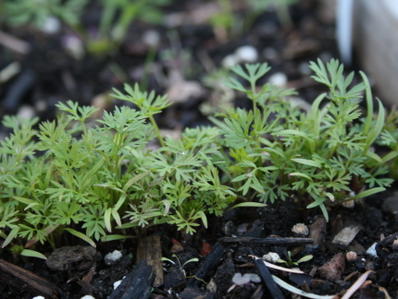
The pain of thinning

Thinning crops is often a difficult task for new gardeners. It’s hard to avoid the feeling that one is wasting potential food, but really, it is a totally necessary step to make sure that each plant has enough room to form properly. And depending on when you do it, you might get some baby (read: gourmet) vegetables out of the process.
I planted carrots a while back in the test garden. I seeded them pretty heavily in case there were any problems with germination. Here is how they grew:
A good time to thin is when the tops are a several inches high. You want to wait until they are established and healthy, but not so long that the roots get in one another’s way. Anywhere from 2-4 inches sounds about right.
This shot really reveals why thinning is necessary. These carrots would not have room to size up:
Be sure to thin gingerly, trying to cause as little disturbance as possible to the surrounding plants. Then again, don’t worry too much. Plants often look a bit droopy after being thinned, but they usually recover.
Thin the seedlings to approximately 2 inches apart. This gives each carrot about 1 inch on either side to grow.
These are on the smaller side, but as I’ve mentioned to in the past, I’m not the world’s most patient gardener. Waiting would have set a better example, but I’m happy to announce that these shots are from a few weeks ago and the carrots are coming along nicely. It just goes to show that you should always be free to experiment in your own little plot of soil.




